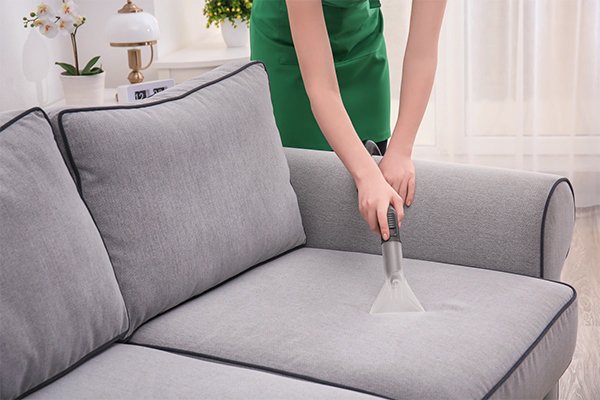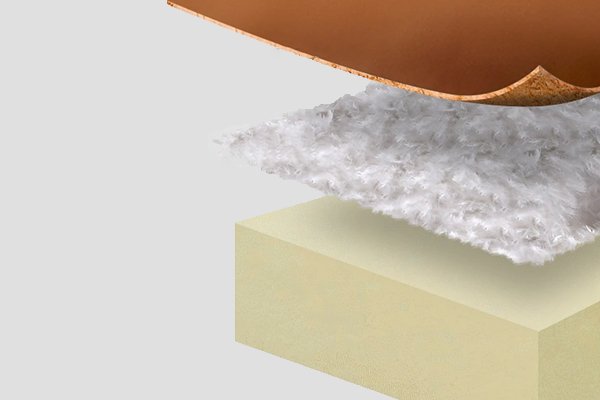
Choosing the right sofa is about more than just aesthetics—what’s inside matters just as much. One key factor that determines the comfort, durability, and support of a sofa is the foam cell structure. Whether you're looking for a plush, sinking feel or firm, long-lasting support, understanding foam cell structure can help you make the right decision.
The cell structure of foam impacts its resilience, durability, breathability, and comfort. High-quality open-cell foams provide better airflow, maintain shape over time, and offer superior body support compared to closed-cell foams.
Let’s explore why foam cell structure is essential in sofas and how it affects seating comfort.
What is Foam Cell Structure?
Foam used in sofas is made up of tiny air pockets, known as cells, which determine how the material reacts to weight, pressure, and air circulation. These cells can be categorized into two main types:
1. Open-Cell Foam

Open-cell foam has a porous structure, where the cells are interconnected. This allows air to flow freely through the material, making it more breathable and responsive.
Advantages of Open-Cell Foam:
- Breathability: Prevents heat buildup, keeping the sofa cool.
- Soft yet supportive: Conforms to the body while providing balanced support.
- Longer lifespan: Bounces back quickly, reducing sagging over time.
- Better weight distribution: Reduces pressure points, ensuring greater comfort.
💡 HSM Recommendation: Open-cell foams, such as HR (High Resilience) foam, are ideal for premium sofas due to their durability and comfort.
2. Closed-Cell Foam

Closed-cell foam consists of tightly packed, non-connected cells, making it denser and firmer than open-cell foam.
Advantages of Closed-Cell Foam:
- Greater firmness: Provides a more rigid and structured seating experience.
- Water-resistant: Less absorbent, making it ideal for outdoor or moisture-prone environments.
- Higher durability in extreme conditions: More resistant to wear and tear in heavy-use areas.
💡 HSM Recommendation: Closed-cell foam is best suited for outdoor sofas, high-traffic seating, and areas requiring extra durability.
How Foam Cell Structure Affects Sofa Comfort and Durability
1. Support & Resilience
The ability of foam to return to its original shape after compression depends on its cell structure. Open-cell foams, such as HR foam, quickly bounce back, maintaining a consistent and comfortable sitting experience over time.
| Foam Type | Resilience Level | Ideal For |
|---|---|---|
| Open-Cell Foam | High | Sofas with long-term comfort and durability |
| Closed-Cell Foam | Medium | Firm seating and outdoor applications |
💡 HSM Recommendation: If you want a sofa that maintains its shape for years, opt for HR open-cell foam in the seat cushions.
2. Breathability & Temperature Regulation
Breathability is a crucial factor, especially for people who use their sofas for extended periods. Open-cell foam allows for better air circulation, reducing heat retention.
| Foam Type | Breathability | Temperature Control |
|---|---|---|
| Open-Cell Foam | High | Cool and comfortable |
| Closed-Cell Foam | Low | Can trap heat |
💡 HSM Recommendation: For a sofa that stays cool and fresh, especially in warm climates, open-cell HR foam is the best option.
3. Durability & Longevity
The density and structure of foam directly impact its lifespan. Closed-cell foam is denser and firmer, making it more resistant to compression, but open-cell foam has better resilience and maintains its comfort over time.
| Foam Type | Lifespan | Maintenance Needed |
|---|---|---|
| Open-Cell Foam | 10-15 years | Low |
| Closed-Cell Foam | 8-12 years | Medium |
💡 HSM Recommendation: If you want a sofa that lasts over a decade, HR open-cell foam is the most reliable choice.
Choosing the Right Foam for Your Sofa
When selecting a sofa, understanding foam cell structure can help you make an informed choice. Here are some key factors to consider:
1. Comfort Level
- For a soft, plush feel: Choose open-cell HR foam with medium firmness.
- For a firm and supportive seat: Opt for closed-cell foam.
2. Usage and Environment
- For everyday family use: Open-cell foam is more durable and comfortable.
- For commercial or high-traffic areas: Closed-cell foam provides extra resistance to wear.
- For outdoor sofas: Closed-cell foam resists moisture and holds its shape in extreme weather.
3. Cost vs. Longevity
- While open-cell HR foam may cost more initially, its longevity and superior comfort make it a cost-effective choice in the long run.
- Closed-cell foam can be a budget-friendly alternative for firm, structured seating.
Conclusion
The cell structure of foam is a crucial factor in determining the comfort, durability, and overall quality of a sofa. Open-cell foams, such as HR foam, provide excellent breathability, support, and resilience, making them ideal for high-quality sofas. Closed-cell foams, on the other hand, are better suited for firm support and outdoor applications.
At HSM, we specialize in compress spring and roll spring sofas, integrating HR open-cell foams to ensure long-lasting comfort and durability. If you're looking for the perfect sofa filling, explore our collection today!
HSM — Compress Sofa Master
🔗 www.compresssofa.com